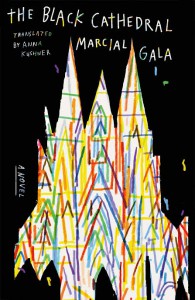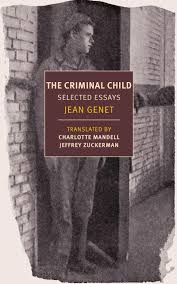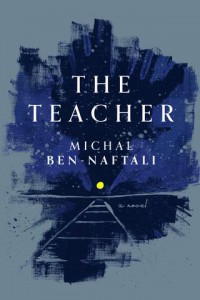We’re starting up 2020 with what we do best: bringing you a selection of brilliant titles that have most recently landed in world literature. Our picks this month span the radical, the intimate, and the dark, with the stunning cross-section of twentieth-century Cuban society, a collection of essays by the notorious Jean Genet, and an Israeli tale of survival and struggle told in a great feat of imagination. Go ahead and take advantage of that new-year urgency to fulfill your resolution to read more, and start here.

The Black Cathedral by Marcial Gala, translated from the Spanish by Anna Kushner, Farrar, Straus and Giroux, 2020
Review by Leah Scott, Social Media Manager
A dark mosaic of interwoven narratives, The Black Cathedral by Marcial Gala lures the reader straight into the complicated dramas of Cienfuegos, a small Cuban town riddled with poverty and conflict. The novel features a broad cast of idiosyncratic characters, whose histories we come to understand not only through their own unique voices, but by the tales told by others; Cienfuego’s harrowing history emerges through decades of local gossip, placing the reader right at the center of the town’s most turbid rumors and confessions—stories that ultimately culminate in a vicious and bitter end.
The story begins when the Stuarts, a black family from the faraway province of Camagüey, arrive in Cienfuegos. Arturo, the patriarch, is a powerful member of the Church of the Holy Sacrament and quickly assumes the role of the neighborhood’s de facto priest. Though outwardly quiet and reserved, several characters attest to Arturo’s violent tendencies, musing about the strange dynamics that must unfold behind closed doors. And while all three Stuart children are thought to be talented, beautiful, or both, the folks of Cienfuegos are plagued with a suspicion that eventually evolves into a deep distrust and distaste for the family. Arturo’s prophetic construction of a mysterious, cursed temple also casts a shadow over the town, labeling the Stuarts as harbingers of evil.
But Gala punctuates the Stuarts’ reputation with benign, quotidian moments—anecdotes that capture the familial nature of any small town. Friendships with the Stuart kids evolve and later dissolve. A criminal joins the Church of the Holy Sacrament in pursuit of the prized daughter’s hand, only to fall deeper into a life of depravity and deceit. Yet while the family emanates this characteristically sinister aura, they are still portrayed as human beings with redeemable—even attractive—traits. As such, they integrate into their Cienfuegos neighborhood with relative ease, perhaps because the neighborhood itself wholly embodies the paradoxical range of human nature: it is host to violence and hardship, yet from its barrenness blooms artists, poets, and writers.
Despite being a quick and darkly comical read, The Black Cathedral addresses a vast thematic spectrum, highlighting the intersectional nature of mid-twentieth century Cuban society. While race seems to underlie every social dynamic—with characters off-handedly (yet constantly, even repeatedly) defining someone as mulatto, white-passing, or black—neither race nor gender seems to function as divisively as the overarching force of poverty. Amid strict legislation criminalizing the sale and consumption of beef, one character starts murdering strangers to turn his victims’ meat for profit. Young female figures are encouraged by their elders to join brothels as a way to earn a living. Others are in constant pursuit of flashy clothes and possessions, aiming to exude power and status—and, thus, to demand respect in a setting where a lack of dominance is likely to result in one’s demise.
It is this pursuit of wealth amid hopeless circumstances that traps some folks in Cienfuegos while inspiring others to flee; poverty is the evil force spurring the never-ending construction of Arturo Stuart’s evil building, an effort spurned by folks desperate for salvation. Yet the prophetic structure ultimately comes to symbolize the town’s static, immortal misfortune—its purgatorial fate as a place virtually unchanged by time as the rest of the world evolves around it.
Marcial Gala’s The Black Cathedral is a transcendent tale of what it is to be human in a place not made to nurture. Exploring this idea of humanity in all its twisted, generous, deviant, beautiful forms, Gala’s novel is a twisted ode to a town teeming with magic and limitless potential, and replete with people in chase of unlikely dreams. Written with an astute colloquialism that captures a true and impressive diversity of voice, The Black Cathedral transports the reader to the marginal town of Cienfuegos, making no efforts to shield us from the dangers—and subtle joys—at the heart of its stories.

The Criminal Child: Selected Essays by Jean Genet, translated from the French by Charlotte Mandell and Jeffrey Zuckerman, NYRB, 2019
Review by Samuel Kahler, Communications Director
Jean Genet never worried about being too honest. During his youth, he served a two-year criminal sentence at a French penitentiary called Mettray, where he and his fellow juvenile inmates endured numerous psychological torments and physical punishments. In 1948, when asked to prepare notes for a radio broadcast about France’s recent prison reforms, Genet shocked the programmers with “The Criminal Child,” a reflection on his time at Mettray and a subversive defense of those who, like him, rejected the conformity of bourgeois society and chose an alternative life outside of the law. “I’m on the side of crime,” went one of the more memorable phrases. Evidently too radical and too far removed from the popular opinions of the age, Genet’s broadcast never aired.
Seventy-plus years later, Genet’s words remain potent, even shocking. While the text has long remained obscure to the Anglophone world, its publication in The Criminal Child: Selected Essays, translated from the French by Charlotte Mandell and Jeffrey Zuckerman, represents its official debut in English. No longer an elusive document, Genet enthusiasts should welcome its arrival.
The collection overall ought to please fans and casual readers, with subjects including a tightrope walker, theater, and the art of Cocteau. Mandell and Zuckerman present a diverse survey of essays, letters, and experimental fragments that display Genet’s faculties as both thinker and artist. Genet’s pen often moves nimbly, between impassioned, righteous, sarcastic, and outraged, and the translators handle these stylistic multitudes with care, as in passages such as this one, found in the collection’s titular essay, directed to the bourgeois society at large:
The merit you have is in professing these principles that give some order to your life. But you are not strong enough to commit yourself whole-heartedly to virtue or to Evil. You preach the one, you disavow the other, even as you profit from it. How practical you are! And yet I could never sing the praises of your practicalities. Go on, accuse me of lyricism. Should any of your judges, court clerks, or prison directors ever stir a song in my soul, I promise you will be the first to know.
The translators render Genet’s argot with diction that would be familiar to an English-reading audience (e.g. women are “chicks;” money is “dough”), but Genet’s fiery virtuosity is best displayed in the titular essay, “The Criminal Child,” a vitriolic and often witty rejection of conventional thinking about the nature of crime and punishment. Here, Genet presents his conception of the criminal child as a moral hero, beholder of a romantic vision, and possessor of an authentic moral code earned through persistent lawbreaking and enduring the many miseries of incarceration, the “thousand ordeals that would prove his true criminality.” It’s a breathtaking text, and can be further appreciated as a foil to Genet’s memoir, The Thief’s Journal, which addresses similar autobiographical terrain. To Genet, the case for prison reforms is unsurprising sentiment from genteel society, but ultimately poses an existential threat that could weaken a child’s capacity to ascend to a life of rebellion. “They want to win back souls back to society,” he writes. “But such reforms, thankfully, are superficial.”

The Teacher by Michal Ben-Naftali, translated from the Hebrew by Daniella Zamir, Open Letter, 2020
Review by Eva Wissting, Editor-at-Large
Israeli writer, editor, and translator Michal Ben-Naftali tells the story of The Teacher in layers. The main character, Elsa Weiss, grows up in 1920s Hungary, studies in Paris, returns to Hungary, and immigrates to Israel just after the Second World War. In 1982, after a long career as an English teacher, she kills herself by jumping out the window of her apartment. What could be the natural end of a story becomes the beginning of another: the narrator’s imagined version of Elsa’s life. The framework of The Teacher is based in reality, solidified by the Holocaust, Bergen-Belsen, and the Kastner train that brought Elsa to Switzerland and eventually enabled her to migrate to Israel. But the details of her life, her thoughts, her feelings, of course, are all made up. “I know everything and nothing at all,” the narrator tells us, and then admits: “From this point forward, it is all fiction.”
After losing her parents and leaving her husband at the end of the war, Elsa keeps to herself and lets no one in. Even the beloved brother Jan, with whom she is reunited in Israel, is kept at a manageable distance. And to her students, Elsa is “not approachable, impervious to the camaraderie of participation, solidarity, or empathy”—however, they were not indifferent to her, and she was not able to prevent them from caring about her. At least, one of them did: the narrator, a former student who takes upon herself to imagine and write down the life of Elsa to prevent it from disappearing into oblivion.
While there is no doubt that the main character is Elsa, the unnamed narrator also becomes a second main character. In some chapters, the narrator takes front stage: “I don’t know what thoughts crossed [Elsa’s] mind. Does that even need to be said? Even when it seems I’m disappearing, remember I’m in the picture,” the narrator reminds us. These words are for the reader to keep in mind, because even though Elsa is told in the third person, we often get extremely close—to the microscopic level of the smallest thought, a tiny moment of indecisiveness, or an intimate emotion; nothing is too private to let the reader all the way in. And yet, there is still the narrator between the reader and Elsa, even when we are tricked to forget about that layer in-between.
Both the construction of the narrative and the language are masterly handled by Ben-Naftali, who has been awarded the 2016 Sapir Prize for this book, as well as the 2019 Adei Wizo Prize in its Italian translation by Alessandra Shomroni. Had I not known that this was a translation, I would have assumed Ben-Naftali, a translator herself, had written this in English—that is how smoothly the English flows. A few times there are local references a non-Israeli like me are unable to understand in detail, such as neighborhoods that might bring associations to readers more familiar with Tel Aviv, but it never prevents one from following the story or its sentiments. At the end of the book, a few details are explained, such as the term “Neolog Judaism” and English translations of a couple of phrases in other languages, such as Latin, French, and what I guess is Yiddish, but I didn’t discover that until the end because their insertion into the story was never disruptive.
The title The Teacher is almost anonymous—which is why it is brilliant. The main character Elsa Weiss, of course, is a teacher but also a person who strives to stay as anonymous as possible to endure life after trauma. However, the narrator is also a teacher, and for the main part chooses to remain anonymous as well, hidden behind the story of Elsa Weiss. And while this book is the story about both Elsa and the narrator, it is also a book that illuminates complex issues—survivor’s guilt, how to understand the incomprehensible, how to talk about the unmentionable. The teacher, in this book, is multiple.
*****
Read more on the Asymptote blog:

